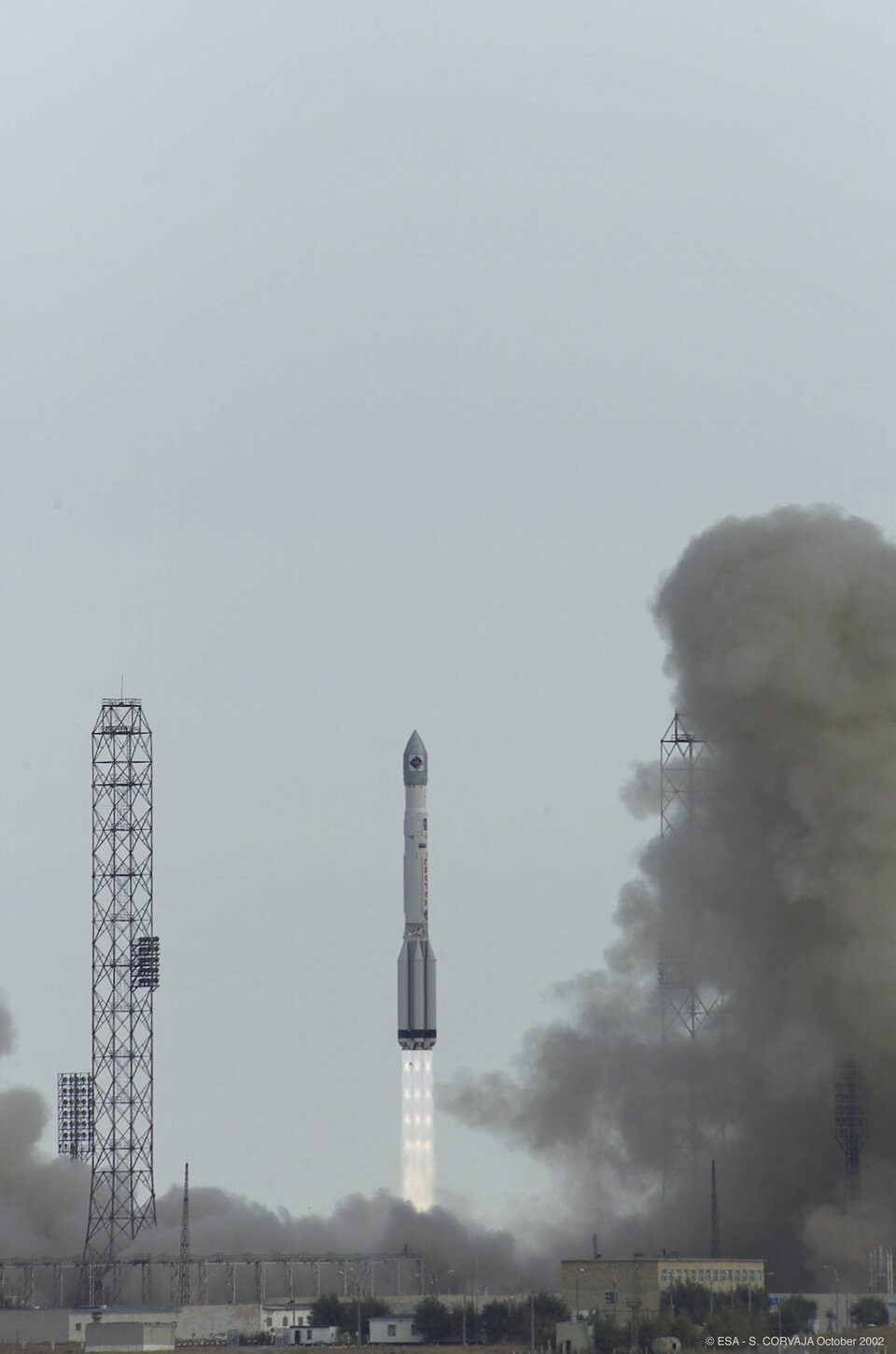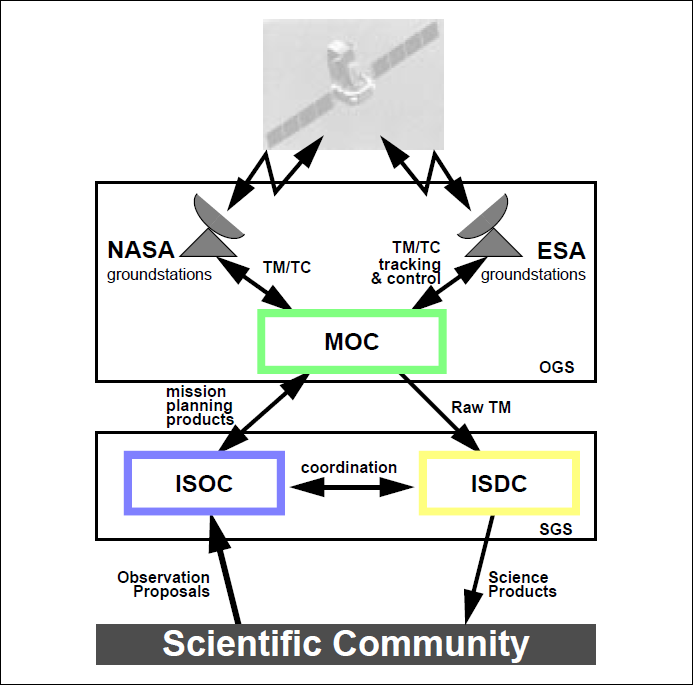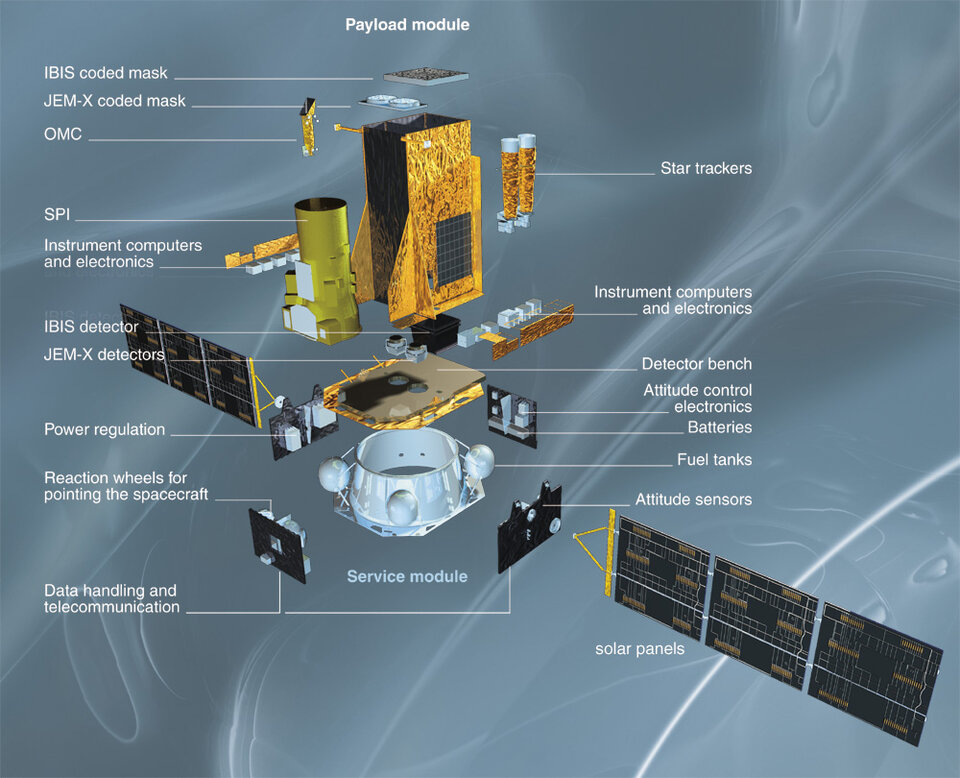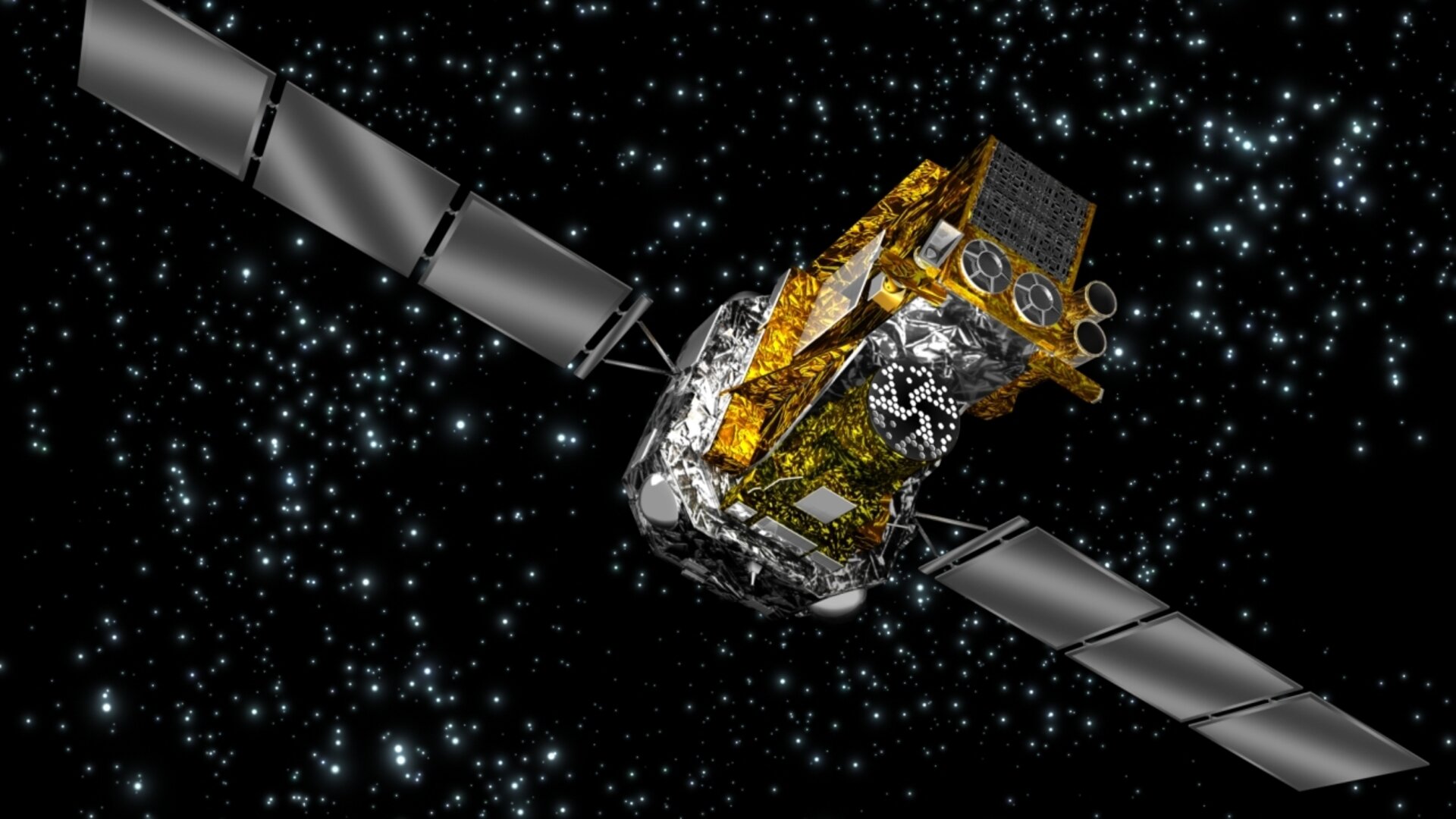Integral operations
The Integral mission is providing new insights into the Universe's most violent and exotic objects, such as black holes, neutron stars, active galactic nuclei and supernovae.
Integral is making important contributions to understanding processes such as the formation of new chemical elements and the mysterious gamma-ray bursts, the most energetic phenomena in the Universe. Integral is the most sensitive gamma-ray observatory ever launched.
The mission
Gamma rays are even more powerful than the X-rays used in medical and dental examinations. Fortunately, the Earth's atmosphere protects us from this dangerous cosmic radiation. However, this also means that gamma rays from deep space can only be detected by satellites.
Integral is a truly international mission with the participation of various ESA member states plus the United States, Russia, the Czech Republic and Poland. The four instruments are exploited by teams led by scientists in Italy, France, Germany, Denmark and Spain. A Russian Proton rocket placed the spacecraft into orbit, while ESA and INTA ground stations stay in touch from Earth.
The Mission Operations Centre (MOC) is located at ESOC, Darmstadt, Germany; the Science Operations Centre (SOC) at ESAC in Spain; and Switzerland hosts the Integral Science Data Centre (ISDC).
| ROLE | Gamma-ray astrophysics observatory |
| LAUNCH DATE | 17 Oct 2002 |
| LAUNCHER/LOCATION | Proton/Baikonur, Kazakhstan |
| LAUNCH MASS | 4000 kg |
| ORBIT | 146,000 km/3500 km - 64 hr elliptical |
| NOMINAL MISSION | Two years - presently extended to 31 December 2024 |
| ++ Detecting some of the most energetic radiation that comes from space ++ | |
The Flight Control Team

The Flight Control Team (FCT) at ESOC operates from a Dedicated Control Room (DCR) co-located with the XMM-Newton, Gaia and Euclid DCR. Spacecraft Operations Manager (SOM) Richard Southworth oversees the FCT, which comprises spacecraft operations engineers, data analysts, and satellite controllers.
Since late 2007, the XMM-Newton and Integral FCTs have been merged such that Integral team members provide back-up support to XMM-Newton and vice versa. The after-hours engineering on-call rota is also shared, with just one engineer having responsibility for both missions outside normal working hours. Additionally, both missions are now controlled in parallel by just one Spacecraft Controller, who also controls the Gaia mission.
In 2006, the team also conducted sophisticated manoeuvres that enabled Integral to conduct unique Earth observations related to the cosmic diffuse high-energy background radiation. A second set of Earth observations was executed in 2012-15 to enable the Flight Control Team to calibrate the background radiation as we move toward the solar maximum period of the current solar cycle.
In early 2015, the Flight Control Team executed a series of manoeuvres to ensure an ESA Space Debris Policy compliant disposal at re-entry in early 2029.
In May 2020, Integral's propulsion system failed, since then the observatory has been controlled without the use of propellant by balancing the build up of angular momentum from solar radiation pressure over a planning period.
In September 2021, the mission was almost lost following a failed safe mode entry, since then a completely new safe mode has been deployed on board.
Additional ESOC teams provide ongoing support to Integral in the areas of Flight Dynamics, Ground Facilities and Software Support, among others.
Mission operations overview

Integral was launched on 17 October 2002 at 06:41 CET by a Russian Proton rocket from Baikonur, Kazakhstan. The launch sequence, involving a delayed injection of the rocket upper stage 50 minutes after lift-off, was nominal.
The satellite was placed in a 66-hour high elliptical orbit with an apogee of 153 000 km, a perigee of 690 km, and an inclination of 51.6°. The satellite was acquired, as planned, 1 hour and 32 minutes after lift-off by the ESTRACK station at ESA/ESAC and 3 minutes later by Redu station.
Launch and Early Operations Phase - LEOP
LEOP included raising the orbit perigee from 690 to 9000 km and lasted, as planned, for six orbits. It involved five perigee-raising propulsion burns at apogee 3, 4, and 5, and an apogee adjustment manoeuvre at perigee 6 to adjust the geo-synchronicity of the orbit to 72 hours. During the LEOP, the instruments were switched on and checked out.
Commissioning Phase
The commissioning phase of the mission started on 4 November 2002 and lasted until 17 December when the mission entered officially its routine phase. During commissioning, calibration of the spacecraft platform took place, the main instrument's high-voltage power was switched on, and scientists and principal investigators (PIs) at the MOC measured initial instrument performance before moving to the ISDC to assist with in-flight calibration of the instruments.
Routine science operations began, as planned, at the end of 2002. The performance of the ground and space segments continues to be excellent and exceed the original mission specifications.
Extended Mission
Integral is now in its eleventh mission extension, and the currently planned end of mission is December 2024. The long mission duration is possible because most elements of flight hardware and software are still operating nominally and the few failures to date have been successfully mitigated by use of operational workarounds. The continuing excellent performance and minimal degradation of the payload instruments make mission extensions highly worthwhile in terms of science return.
During this phase, Integral will face a number of further challenges. In particular, the orbit has evolved such that the perigee altitude is below 5,000km and will remain there usntil re-entry in 2029. This change in orbit means that Integral will pass through the inner (proton) Van Allen belts every orbit; it is not known how well Integral will cope with such a harsh radiation environment.
The ground stations - Kiruna

Routine communications for Integral are provided by the ESA ground station at Kiruna, Sweden, and by the INTA stations at ESAC, Spain.
Ground segment & mission control system
The Integral ground segment uses the SCOS-2000 mission control system with a number of mission specific modifications.

The MOC at ESOC is responsible for the operation of the spacecraft and instruments, for ensuring the spacecraft safety and health, for the maintenance of the satellite's on-board software, for the provision of flight dynamics support including determination and control of the satellite's orbit and attitude and for provision of all telemetry and auxiliary data to the ISDC.

Integral operations are executed using an automated time line. The time line is generated on a revolution-by-revolution basis, i.e. one time line covers the period from perigee passage to the next perigee passage, which is approximately 64 hours.
The MOC maintains the on-board software and the operational database and is responsible for the short- and long-term archiving of the telemetry, telecommands and auxiliary data. The archive is consolidated (filling of data gaps) with the satellite playback telemetry received from the ground stations when required. In addition to the real-time link to the ISDC that provides the majority of the TM data within seconds, the consolidated data are provided offline to ensure data completeness.
The platform and payload
The platform is three-axis stabilised and to a large extent identical to that of XMM-Newton. All operations must be executed in real time, as no on-board time-line execution or storage of telemetry is available.
The main payload consists of the Spectrometer on Integral (SPI) and Imager on board Integral (IBIS).
These are complemented by two monitor instruments in the X-ray (JEM-X) and optical ranges (OMC), co-aligned with the main instruments, and a radiation monitor for real-time measurement of the radiation environment and safeguarding of the instruments.

SPI, IBIS, and JEM-X are provided with coded masks, allowing source localisation to an accuracy of better than one arc minute.
The payload, designed and built by European scientific institutes, provides the science community with an unprecedented combination of imaging and fine spectroscopy over a very wide range of wavelengths from gamma ray to optical.




